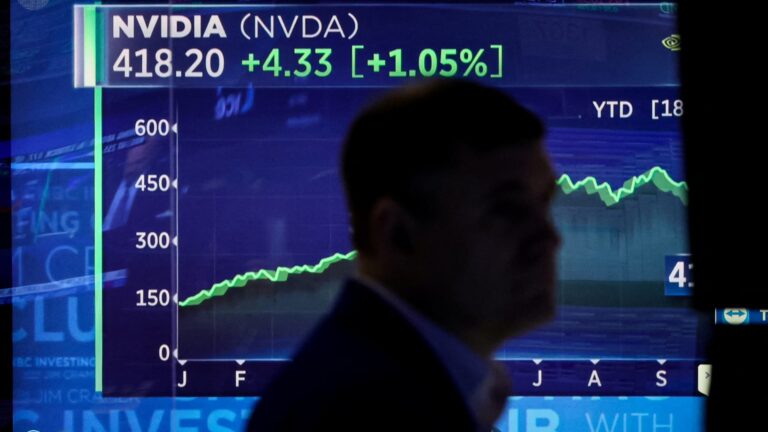Nvidia’s stock has been volatile over the past month on concerns about future demand for AI chips and the pace at which artificial intelligence will be widely adopted. The stock has more than doubled this year as the company posted double-digit growth in net income in the first two quarters of this year, but its shares fell 13% over three trading days last month before rebounding. NVDA 1Y line Major cloud companies including Microsoft, Amazon and Google have bought billions of dollars of AI chips from Nvidia over the past two years. Investors now want to know whether these Big Tech giants will be able to make a return on their investment — a precursor to further spending on AI chips. “There are still questions about demand. Where is the profitability of AI?” [companies] “How are they going to spend all this money? How are they going to keep doing this? How is this going to accelerate in the years ahead?” Raj Shant, managing director of Jennison Associates, one of Nvidia’s top 10 shareholders, said Monday on CNBC’s “Street Signs Europe.” But history shows that major technological developments tend to take longer than expected to improve productivity. The impact of railways, for example, first introduced in Britain, took about 70 years to show up in productivity data, according to Capital Economics. But the lag times for technologies invented since then have shortened. “Nvidia investors are following a long tradition of trying to capture the benefits of new technologies before they fully materialize in the real economy,” Neil Shearing, chief economist at Capital Economics, said in a note to clients on July 1. “This was true during the ‘Railway Mania’ of the late 19th century, and more recently during the dotcom boom at the end of the last century.” However, “tentative” signs have begun to emerge that spending on AI chips could boost investment in the broader sector. According to Capital Economics, the consultancy’s economists believe that the productivity improvements seen in the last two quarters in the US economy can be partly attributed to “investment in software rather than hardware.” However, they caution that most of the productivity gains will not be felt until the end of this decade. “We remain of the view that the productivity boost from AI will be substantial… but that this boost will not come until the second half of this decade,” Shearing added. CGI Inc. For clues as to how quickly AI technologies are being adopted, Scotiabank highlighted CGI, a Canadian multinational IT firm that helps companies introduce AI into their business models and operations. CGI shares are traded in the U.S. and Canada. Last year, CGI announced plans to invest $1 billion over three years to expand its AI capabilities. But Scotiabank analyst Divya Goyal noted a “slower-than-expected adoption of the technology” among its clients. Many companies are still in the “discovery” phase of the AI trend, Goyal said, which involves producing proof-of-concept applications, while others are waiting for AI software to mature before implementing it. The analyst said many companies are looking to transition to a viable AI-based service in the next six to 24 months. GIB 5Y Line “According to the CGI team, while approximately 80% of customers are currently exploring [generative] “In terms of AI, less than 10% are in the implementation phase and there is limited funding currently being allocated to such generational AI deployments,” Goyal said. The Scotiabank analyst believes that as large enterprises prepare to start investing in AI, CGI should benefit and capture any future growth. “We believe CGI is well positioned to meet the growing demand for AI engagements across its global client base,” Goyal said. Scotiabank expects CGI shares to rise 17% from their current price of C$136.55 ($99.62) for Toronto-listed shares and C$99 for New York-listed shares.


